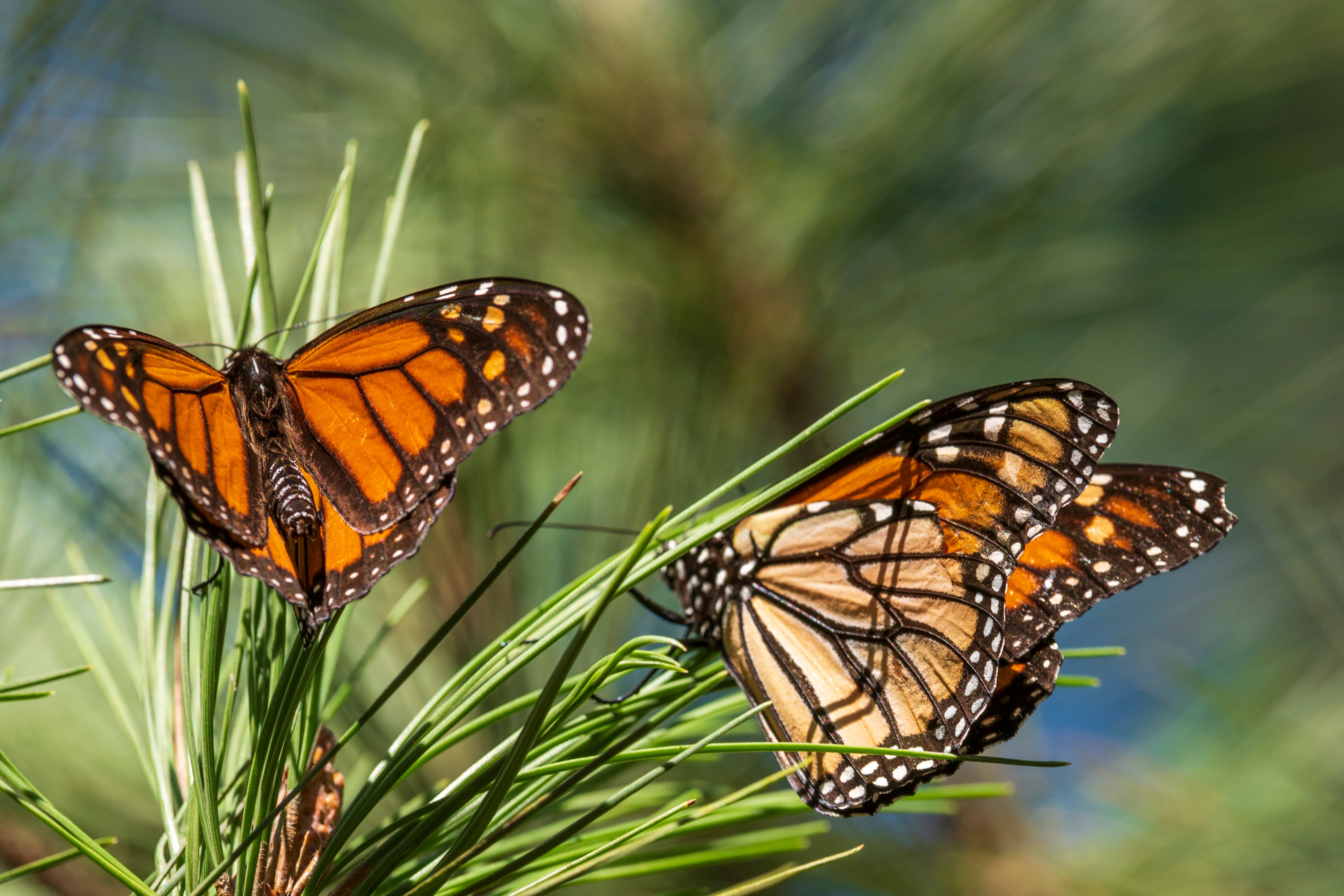Western monarchs rebound but still below historic population
The number of Western monarch butterflies overwintering in California has rebounded to more than 247,000 a year after fewer than 2,000 appeared

The number of Western monarch butterflies overwintering in California rebounded to more than 247,000 a year after fewer than 2,000 appeared, but the tally remained far below the millions that were seen in the 1980s, leaders of an annual count said Tuesday.
The Western Monarch Thanksgiving Count revealed the highest number of butterflies in five years but it is still less than 5% of the 1980s population, said Emma Pelton, senior endangered species biologist with the Xerces Society for Invertebrate Conservation.
Pelton said she was ecstatic about the turnabout but cautioned that it did not indicate a recovery of the species.
“It will take multiple more years to understand if this is the beginning of a trend or just a blip,” she said in an online news conference.
Western monarchs, the population found west of the Rockies overwinter in groves along the Pacific coast from Northern California’s Mendocino County south to the northern edge of Baja California, as well as in a few inland locations. Monarchs east of the Rockies migrate deep into Mexico for winter.
The Western monarch count is conducted by trained volunteers over several weeks around the Thanksgiving holiday. It dates to 1997 and has observed a loss of more than 95% of a population that according to earlier studies once numbered in the low millions.
The count released a year ago was the smallest ever seen, and the reasons for the turnabout are elusive, according to Pelton. Not only was there the largest one-year increase ever seen, but the butterflies were found at 283 sites, the most ever.
“The question of the day that we’re getting is really, why are we having this uptick? And we don’t have a single definitive answer for you,” Pelton said.
Factors could include good weather, the amount of milkweed the monarchs rely on and some interchange between the Western and Eastern populations, but the monarchs have a complex migratory cycle with multiple generations over a complex landscape, she said.
Pelton said she believes the numbers are going to continue to fluctuate until underlying causes for the huge declines over the decade are dealt with.
“And the root of those are habitat loss, both at the overwintering sites in California and elsewhere, and then migratory breeding habitat,” she said.
Among details in the data, the count showed that overwintering sites trended to the south.
California's central coast usually sees the most monarchs, and the San Francisco Bay Area normally has significant numbers as well. In the latest count, however, Bay Area sites had few or no monarchs.
The most monarchs — more than 95,000 — were found in Santa Barbara County, including one site on private property that had 25,000 butterflies.
Farther south, Ventura County had nearly 19,500 butterflies and Los Angeles County had more than 4,000 — numbers that hadn't been seen since the early 2000s.
Bookmark popover
Removed from bookmarks